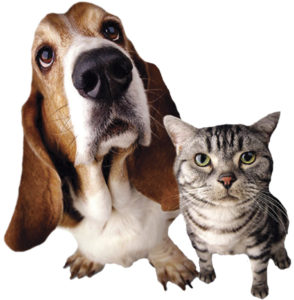 Everyday HOUSEHOLD TOXINS
Everyday HOUSEHOLD TOXINS
By Dr. Monica DeVilbiss, DVM – Town Center Animal Hospital
Home is where we should feel safe and protected; the same should go for your pets, but unfortunately home is precisely where thousands of dogs and cats become ill every year!
Do you know what the most common household toxins are and how to keep your pets safe? Some toxins cause mild and transient effects, but many of them can cause permanent damage and even death.
Most toxins can be grouped into a few general categories:
- Recreational Compounds; such as Tobacco, marijuana, cocaine.
- Food items; such as caffeine, chocolate, onions, raisins, grapes, garlic, almonds, macadamia nuts, avocados, alcohol, uncooked or rotten foods, bread dough, some mushrooms, apricots.
- Pest Control/ Insecticide products; such as those used around the house and products intended for topical.
- Home products; such as gum containing xylitol, glue, lead paint, liquid potpourri, mothballs, toilet tank drop-ins, pool and hot tub chemicals, antifreeze, rodent poisons and baits, insect sprays and chemical traps, batteries, cleaning products, glow in the dark jewelry, silica gels.
- Fertilizers/Plants; such as Lilies, Amaryllis bulb, Sago palm, Oleander, Azaleas and Kalanchoe. Rhododendron, Schefflera, Begonia, Bleeding Heart, Caladium, Castor bean, Heavenly bamboo, Choke cherry, Larkspur, Dumb cane, Foxglove, Hydrangea, Jimson week, Lantana, Mistletoe berries, Morning glory, Oak, Peaches, Pencil cactus plant, Philodendron, Rhubarb leaves, Shamrock, Yew.
- Metals; such as pennies, Iron found in multivitamins if eaten in large quantities.
- Medications; such as birth control pills or many other prescriptions for people. Even your own pet’s medication can be toxic if eaten all at once or given by the wrong route.
So you come home from work and notice your pet has eaten a toxin. What do you do? SAVE IT! Save the packaging or a piece of it for identification, this will allow for appropriate treatment if necessary, then contact your Veterinarian or Poison Control immediately!
Depending on the type and the quantity of the toxin ingested your pet may exhibit quite a wide range of symptoms. Some of these symptoms (clinical signs) are: vomiting/ diarrhea, drooling, increased urination, increased thirst, respiratory distress, pale, blue or red gums (normal should be pink), red spots on the gums or the skin,
depression/lethargy, wobbly gait, muscle tremors, seizures, and in severe cases death. Timing is everything when dealing with toxins and minimizing the time between ingestion and treatment is crucial in successful managing of toxicity. In some cases (not all!) your veterinarian may need to make your pet vomit to avoid the complete absorption of the toxin by the body; this will only be successful if vomiting is induced within a couple of hours after ingestion. Please, don’t attempt to make your pet vomit at home; this should only be attempted by professionals with appropriate medications to avoid causing further injury to your pet.
After inducing vomiting your veterinarian may also give your pet activated charcoal; this is used to bind toxins and further avoid absorption of particles left behind. Your pet will therefore have black stool for a few days. The third step in decontamination is fluids; your veterinarian may recommend giving your pet IV fluids to dilute absorbed toxins. Your veterinarian will be able to recommend what is best for your pet depending on the toxin ingested (remember keep the label or packaging), the amount and the time post- ingestion.
In order to avoid emergency visits to the vet keep all toxins in a safe place and ensure your pets cannot get to them. Pets have been known to eat many things we wouldn’t consider appetizing, so please don’t assume they won’t, keep them out of reach.
Contact your veterinarian as soon as you realize your pet has ingested a toxin, it may save his or her life!

